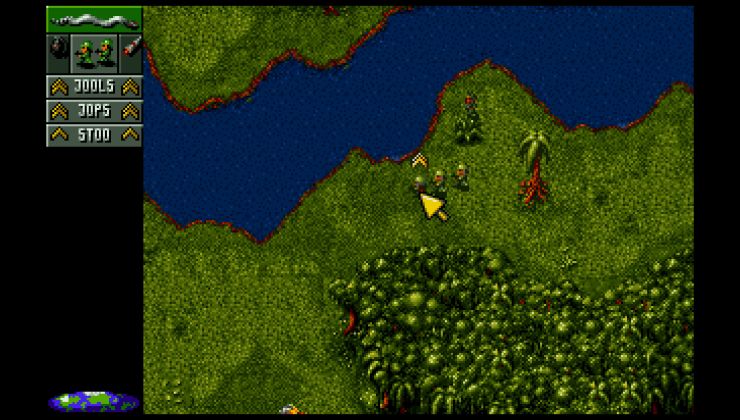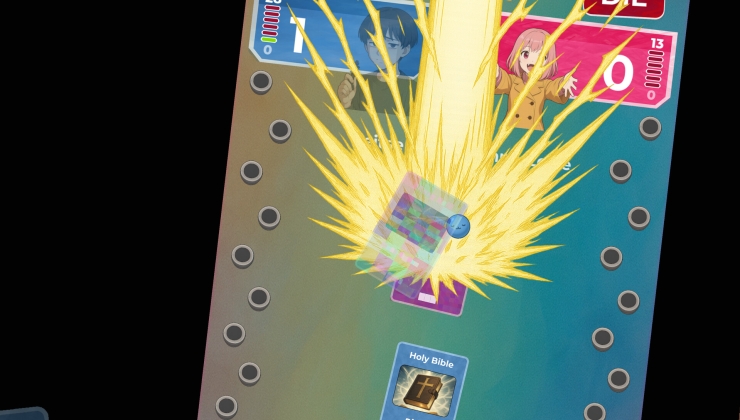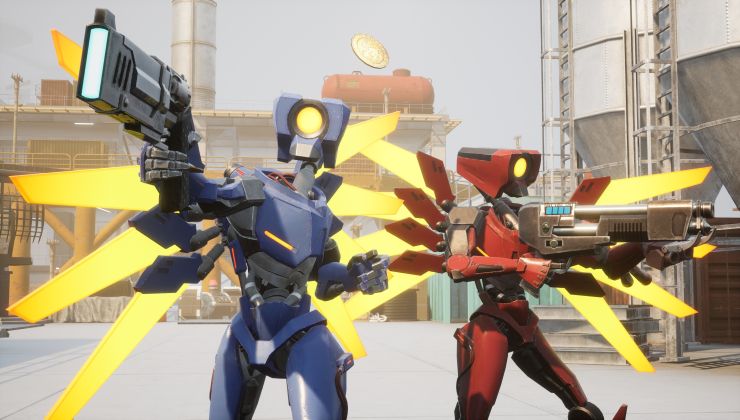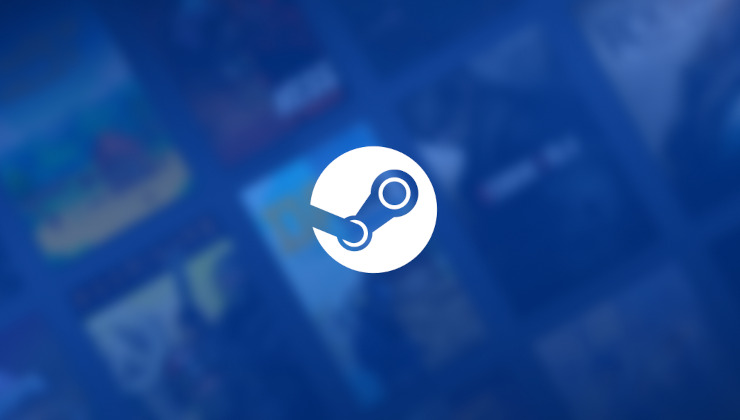NVIDIA announced today an expansion of RTX and DLSS for plenty of Windows games, and for Linux users there's something exciting coming too: NVIDIA will hook up DLSS with DirectX 11 and 12 with Proton in September.
What is DLSS? NVIDIA DLSS (Deep Learning Super Sampling) is an AI-powered rendering tech to help increase performance for NVIDIA GPUs using their dedicated Tensor Core AI processors. It helps to boost framerates by rendering frames at a lower resolution and then it's made to look much crispier using deep learning.
Currently DLSS on Linux with Proton only works with Vulkan titles but that's about to change in September. In their announcement they said:
Recently, we launched support for NVIDIA DLSS in Proton, enabling Linux gamers to play Vulkan API games with NVIDIA DLSS, including DOOM Eternal, No Man’s Sky, and Wolfenstein: Youngblood. Next month, support extends to dozens of DirectX 11 and DirectX 12 games, including Control, Cyberpunk 2077, Death Stranding, F1 2020, Mechwarrior 5: Mercenaries, and Necromunda: Hired Gun.
Stay tuned for further details.
Some of the work is live now on GitHub in Pull Requests to get it all working with Proton:
- dxvk-nvapi - "Nvapi: add new NvAPI implementation"
- dxvk-nvapi - "Implement the required NvAPI entrypoints for D3D11 DLSS support"
- VKD3D-Proton - "vkd3d: Add new interfaces: ID3D12DeviceExt, ID3D12GraphicsCommandListExt"
- DXVK - "Implement DXVK pieces required for DX11 DLSS support"
Last edited by skinnyraf on 24 Aug 2021 at 1:25 pm UTC
Wouldn't a unified Vulkan extension make sense to allow usage of XMX/TCs without vendor exclusive APIs?
LSS (Deep Learning Super Sampling) is an AI-powered rendering tech to help increase performance for NVIDIA GPUs using their dedicated Tensor Core AI processors. It helps to boost framerates by rendering frames at a lower resolution and then it's made to look much crispier using deep learning.Translating it from marketing terms to normal ones, it's an upscaling technology. Idea of any upscaling is to render at lower resolution (which allows better performance, i.e. framerate) and try to compensate the reduction of quality with some smart tricks to make it good enough.
Overall, I'd say GPUs are improving in general and upscaling isn't really that critical, unless for some reason you insist on using very high resolution and want to make GPUs cope with it. But the question you can ask, is high resolution using upscaling better than lower resolution without upscaling?
Last edited by Shmerl on 24 Aug 2021 at 6:06 pm UTC
Man that game is awesome. I am 100% addicted.
Quoting: BeamboomOh yay - this might mean both better performance and visuals for Cyberpunk 2077, doesn't it?Performance yes, but visuals is a moot thing. Visuals should be better without upscaling in general.
Man that game is awesome. I am 100% addicted.
I agree about the game - it's very good. I'm playing it now.
Last edited by Shmerl on 24 Aug 2021 at 6:25 pm UTC
Quoting: ShmerlPerformance yes, but visuals is a moot thing. Visuals should be better without upscaling in general.DL backed TSSAA can solve many aspects of aliasing and upscaling better in lower resolution than traditional TSSAA in native one.
The TAA in CyberPunk also isn't really good, combined with CAS I really find DLSS "Quality" scaling factor to look better than native (with the "magic" 2.2.6 version of DLSS, of which Nvidia doesn't seem to know why it looks better than previous and later versions). It definitely looks that good in a number of games, e.g. also in Fortnite and Doom Eternal.
Last edited by aufkrawall on 24 Aug 2021 at 6:46 pm UTC
Quoting: ShmerlI think it's still not a universal benefit. So better for them to come up with smart antialiasing without any upscaling if they want to make things better across the board.Despite of upsampling, the benefits are still so distinct that it makes native resolution rendering look like a total waste of computing power. I think actually the opposite should take place: Game developers should tweak the graphics in such a way that lower resolution doesn't negatively affect shadow drawing distance etc. so that upsampling can be used with less visual degradation. It would eat upa a few per cent of the performance gains, but chances are you can gain even more by lowering render resolution and still have a similarly good looking image.
Quoting: aufkrawallIt would eat upa a few per cent of the performance gains, but chances are you can gain even more by lowering render resolution and still have a similarly good looking image.I think it's still just a race to the bottom. How high do you think monitor resolution should grow in general? Beyond certain point the pixel becomes too small to see any difference. And gradual performance improvement of GPUs will catch up to that eventually. So these tricks with upscaling will become unnecessary, since "good looking" or "not very noticeable" is still not the same as no upscaling.
Last edited by Shmerl on 24 Aug 2021 at 7:20 pm UTC
Quoting: ShmerlI think it's still just a race to the bottom. How high do you think monitor resolution should grow in general? Beyond certain point the pixel becomes too small to see any difference. And gradual performance improvement of GPUs will catch up to that eventually. So these tricks with upscaling will become unnecessary, since "good looking" or "not very noticeable" is still not the same as no upscaling.GPU processing power will still be sparse when we die of age, so it will always make sense to increase render efficiency in one or the other way. TSSAA + deep learning seems to be the path to the holy grail for this. You will easily drop your scepticism once you've seen a proper implementation on your own screen, no worries. ;)
Quoting: skinnyrafBetween the work that AMD does with Valve for the Steam Deck and these Nvidia announcements, it's becoming clear that Proton/Wine/dxvk/VKD3D gain mainstream attention. I wonder if it will lead to "thinning" of the translation layer, in a way similar to what Vulkan already did: less bugs and better performance of new games run via Proton out of the box, without tweaking or game-specific changes to Proton.Possible, but not very likely. DXVK and D9VK took out the limitations of OGL. Wine does not really have this issue, limitations wine faces are in the platform/kernel and not a single library as bottleneck (where there is work on in some parts to improve). Knowing how interconnected parts in wine are, and the reasons we actually need overrides and special configs is different use than "expected", stripping down wine rather than creating configurations is as unreasonable as creating a new translation layer in place of wine, since it would not solve the core issue: You don't change the games or engines, and you do not change the platform you run on.
Never say no, the actual benefit of DXVK really surprised me too, but the problem to solve is mostly different. And dxvk uses game specific configurations already, and that's why I think they'll go down the same route with wine.
Wine isn't actually that heavy once running as a translation layer. I think curated configurations (wine versions/overrides etc.) for the games, and supported/curated versions by game vendors is the way they'll take, since technically I don't see a lot of need to replace wine.
Even in this case Valve would have to invest a lot, which they do not at the moment. And they'll need to make the override system and general game configuration a lot more flexible than it currently is. And would have to work around game specific bugs (as DA:O alt+tab crash), and make that configurable from outside.
I think they'll go for the route of making the system more flexible to their needs trying to get those upstream and providing games with proper configurations rather than really stripping down wine and not knowing the side effects on literally .. 50-100k games and all their pitfalls?
Last edited by STiAT on 24 Aug 2021 at 10:57 pm UTC
I wonder if the same will happen with DLSS, where I don't realize I could get better performance since I expect it to just work on games where it would benefit others where I could just enable it.
And it took me 6 month to realize that Gnome actually has an issue with dual keyboard input causing stutters in games using ReDragon M508 or Razer Naga since two simulated keyboards pressing at the same time freaks gnome (and all desktops based on it) out causing micro freezes you will notice (200ms+). Plasma does not suffer this issue.
A shame, I like Budgie, but didn't find a solution to that one (yet).
Last edited by STiAT on 24 Aug 2021 at 10:46 pm UTC
Quoting: STiATIt took me a month to figure out that I need to force full composite pipeline on nvidia cards to get less tearing and stuttering after not having had one in 10+ years. And I thought the 3070Ti probably wasn't a that good choice after all. It's doing pretty well now. And why the heck do they still require this when it's a non-issue on AMD cards?I've never had to turn that on.
Good upscaling is crucial for handhald device, if you want just conect it to display and play on larger screen...
Quoting: CatKillerYeah, me neither. The few games I've ever had that issue with... well I didn't, as I turn on vsync :grin:Quoting: STiATIt took me a month to figure out that I need to force full composite pipeline on nvidia cards to get less tearing and stuttering after not having had one in 10+ years. And I thought the 3070Ti probably wasn't a that good choice after all. It's doing pretty well now. And why the heck do they still require this when it's a non-issue on AMD cards?I've never had to turn that on.
Quoting: slaapliedjeI often have vsync on, but even there in some games you can tell the difference. FFXIV would be one.Quoting: CatKillerYeah, me neither. The few games I've ever had that issue with... well I didn't, as I turn on vsync :grin:Quoting: STiATIt took me a month to figure out that I need to force full composite pipeline on nvidia cards to get less tearing and stuttering after not having had one in 10+ years. And I thought the 3070Ti probably wasn't a that good choice after all. It's doing pretty well now. And why the heck do they still require this when it's a non-issue on AMD cards?I've never had to turn that on.
Quoting: ArtenGood upscaling is crucial for handhald device, if you want just conect it to display and play on larger screen...I'd say for handhelds that have relatively low resolution in general, upscaling is not so useful.










 How to setup OpenMW for modern Morrowind on Linux / SteamOS and Steam Deck
How to setup OpenMW for modern Morrowind on Linux / SteamOS and Steam Deck How to install Hollow Knight: Silksong mods on Linux, SteamOS and Steam Deck
How to install Hollow Knight: Silksong mods on Linux, SteamOS and Steam Deck